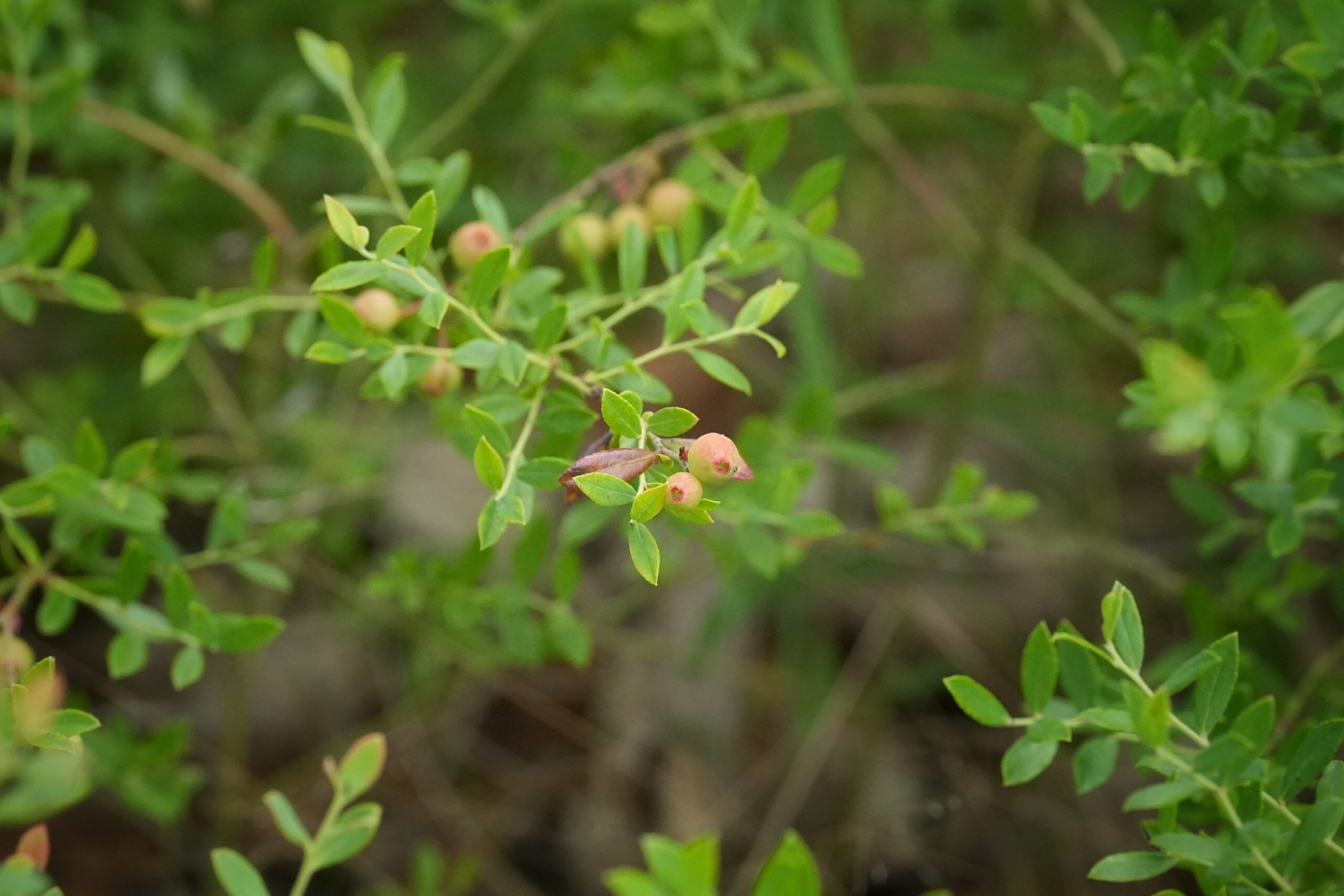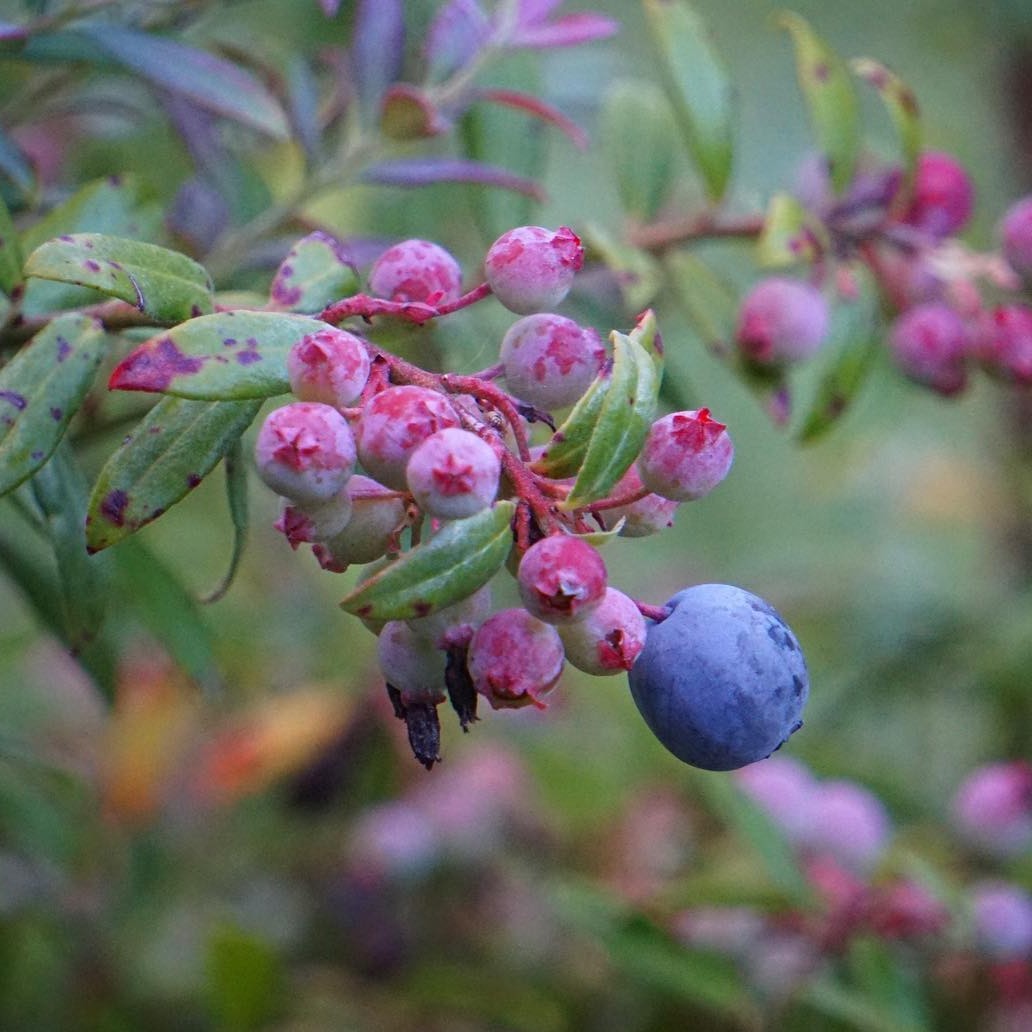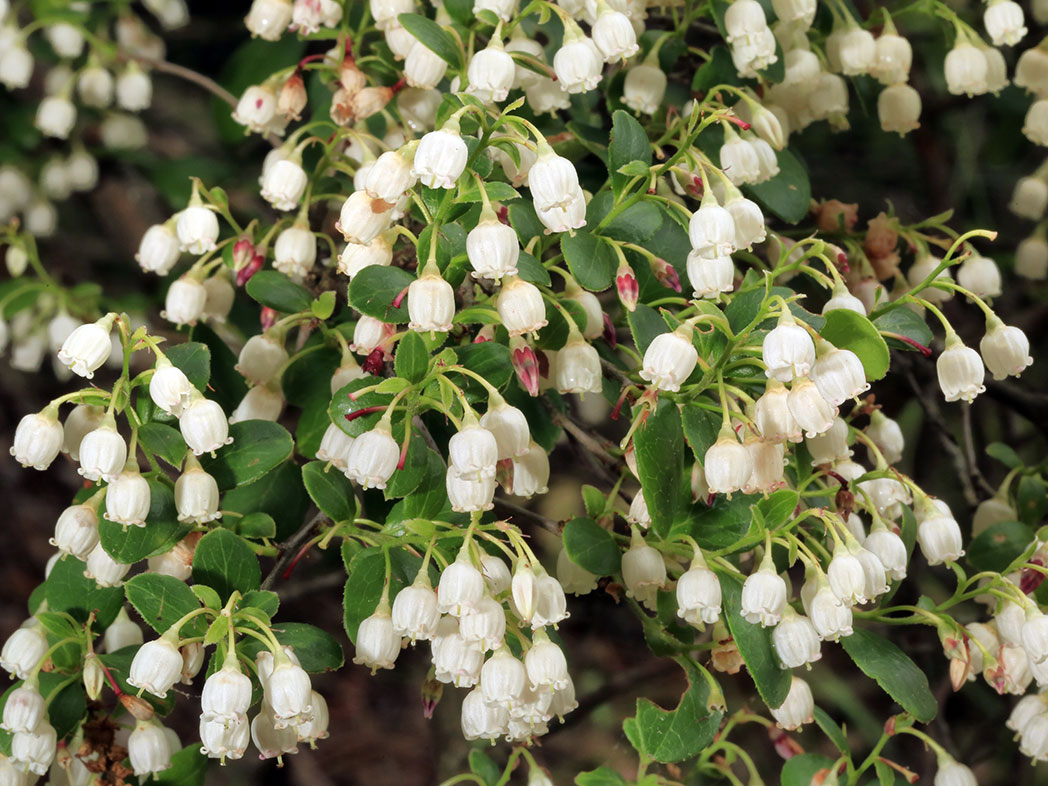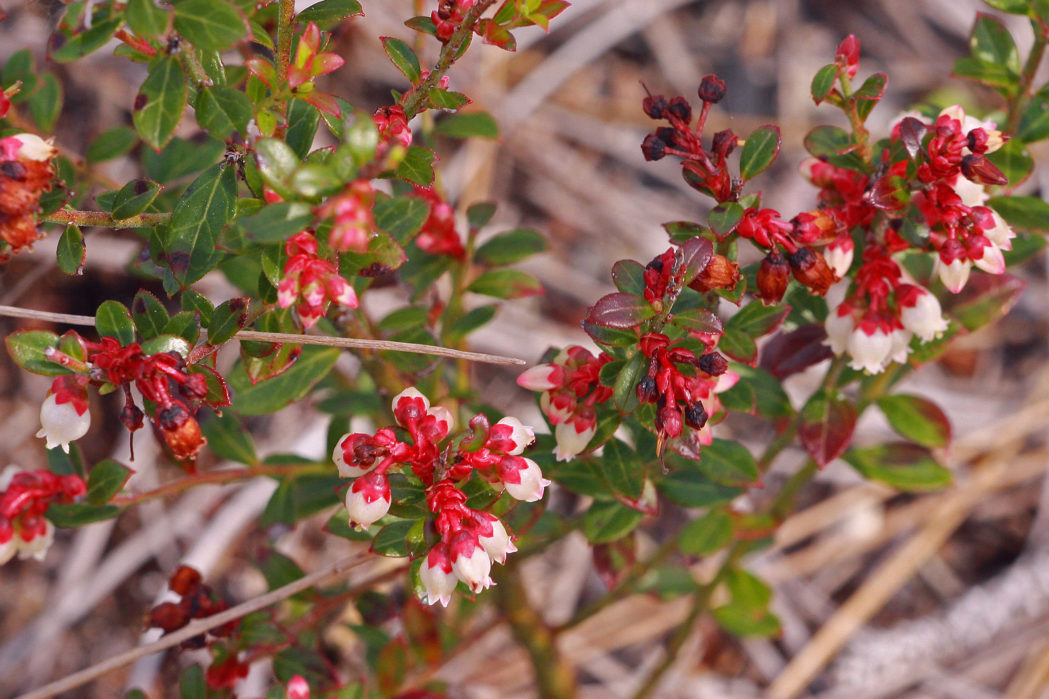Darrow’s blueberry
Pictured above: Darrow’s blueberry (Vaccinium darrowii) by Emily Bell. Click on terms for botanical definitions. View post as a PDF.
Darrow’s blueberry (Vaccinium darrowii) is a small evergreen shrub that is underappreciated as a landscape plant. Its profuse blooms appear in spring, attracting a variety of pollinators, particularly native bees. The sweet, juicy berries that follow in the summer are attractive to birds and other wildlife, as well as humans. Plants occur naturally in pine and scrubby flatwoods and sandhills throughout much of Florida.
The many white to whitish-pink flowers are small (less than ½ inch), urn-shaped, and born in dangling clusters. The flowers are cupped in conspicuous sepals that vary from green to dark pink. Leaves are simple and lanceolate to ovate with entire (occasionally revolute) margins. A glaucous coating gives the leaves a bluish-green or silvery hue. Leaf arrangement is alternate. The shrub is densely branched. Fruits are round, dark blue berries with a glaucous surface.
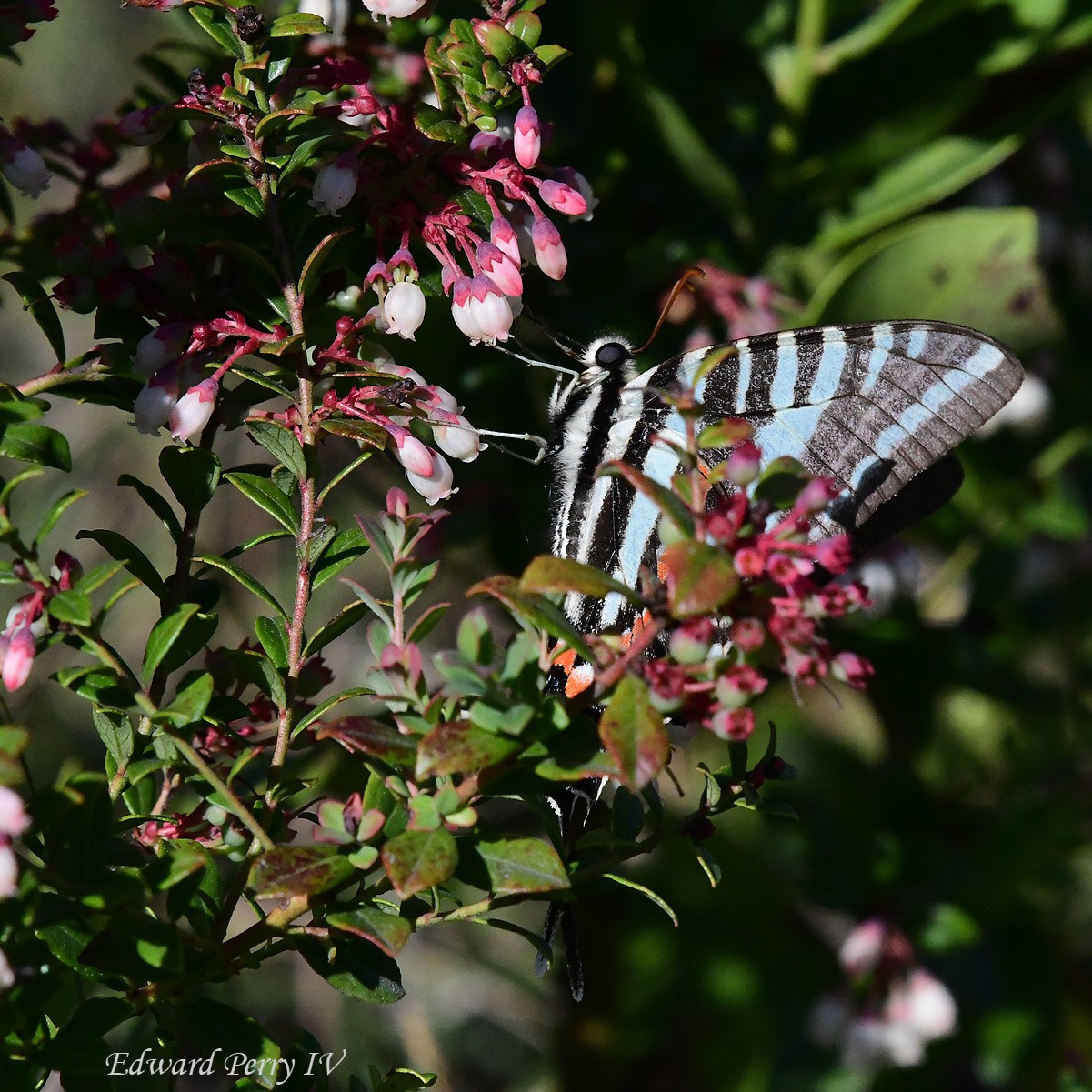
Photo by Edward Perry IV CC-BY-NC
Shiny blueberry (V. myrsinites) is similar to and often grows with Darrow’s blueberry in intermixed colonies. Its young leaves are shiny with black dots or glands on the backs. Its range extends into Florida’s southeastern and northeastern counties. Highbush blueberry (V. corymbosum) occurs in wetter and shadier locales throughout Central and North Florida. It sometimes interbreeds naturally with Darrow’s blueberry. Both Darrow’s and Highbush blueberry have been used to develop the Florida commercial cultivars of our growing blueberry industry.
Family: Ericaceae (heath, azalea, or blueberry family)
Native range: Nearly throughout Florida, except some southeastern and northeastern counties
To see where natural populations of Darrow’s blueberry have been vouchered, visit florida.plantatlas.usf.edu.
Lifespan: Perennial
Soil: Dry to seasonally wet, well-drained, acidic sandy soils
Exposure: Full sun to partial shade
Growth habit: 1–2’+ tall and equally wide
Propagation: Cuttings, division, seed
Florida regions of landscape suitability: North, Central, South
Garden tips: Use Darrow’s blueberry as a low border planting, in masses or as a specimen or accent plant. Its beautiful and interesting foliage, copious blooms and showy fruit provide interest year-round. It is hardy, adaptable and drought tolerant.
Darrow’s blueberry plants are often available from nurseries that specialize in Florida native plants. Visit www.PlantRealFlorida.org to find a nursery in your area.
Learn more about Darrow’s blueberry from the Florida Native Plant Society and the Institute for Regional Conservation.
For information on other Vaccinium species, see these resources:

